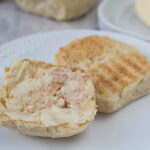

In Denmark it is a great tradition to eat warm wheat buns, or wheat buds (hvede knopper) as they sometimes are called, the day/evening before Big Prayer Day (Store Bededag). Big Prayer Day is always the fourth Friday after Easter. Originally these wheat buns were made some days in advance, because Big Prayer Day is a holiday where the bakers weren't at work. The buns were then bought before Big Prayer Day and then toasted on the day. Today, it is more of a tradition to eat the wheat-buns the evening before the Prayer Day.
These buns are very similar to another traditional Danish type of buns which are called Krydderboller which means Spiced Buns because of the cardamom which is added to the dough - the recipe for the two types of buns are almost the same. The buns are normally cut in two halves and then toasted on a toaster or in the oven. They a served with cold butter and cup of coffee.
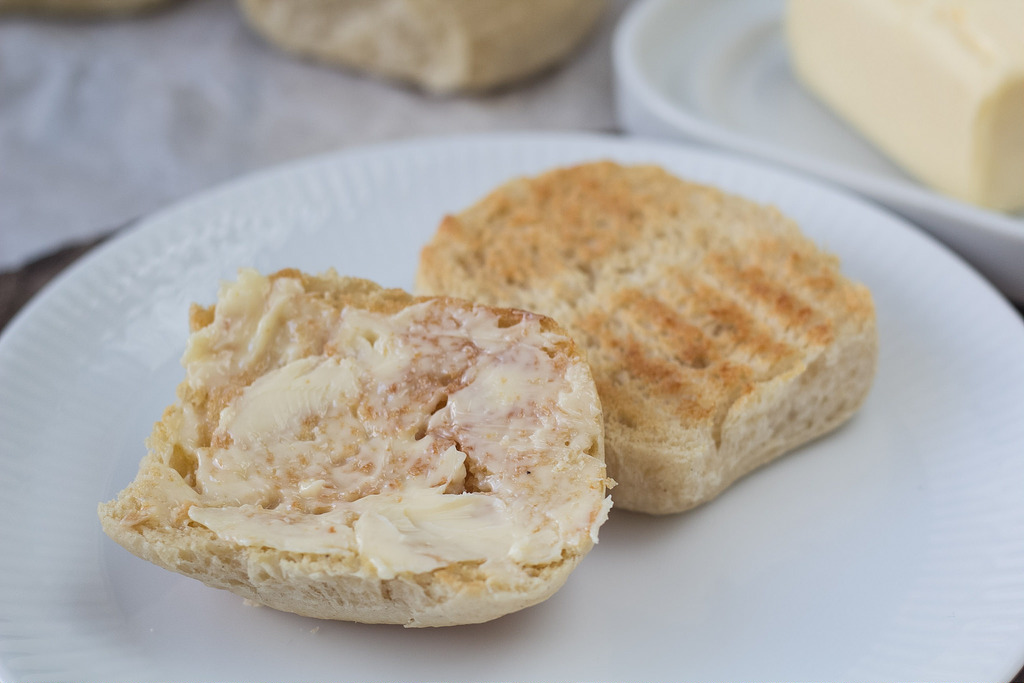
Ingredients
- 2 dl milk
- 50 g fresh yeast
- 1 tbsp sugar
- 500 g all-purpose flour
- 100 g soft butter
- 2 tsp cardamom
- 1/2 tsp salt
- 1 egg
Instructions
- Heat the milk so it is lukewarm and dissolve the yeast and sugar in it.
- Add the egg, the soft butter, all purpose flour, salt and cardamom.
- Knead the dough using your hands or a stand mixer.
- Leave the dough to rise someplace warm for about an hour.
- Divide the dough into 16 equally sized pieces and roll them into buns.
- On a parchment paper covered baking tray; place the buns side-by-side. They must be closely adjacent to each other, but without touching.
- Cover the buns with a clean dishcloth and let them rise for another hour.
- Bake the buns at 200 C (400 F) for about 8-10 minutes. When done; let them cool off a bit.
- Cut the buns in the middle and toast them lightly on a toaster. Serve them warm with cold butter.


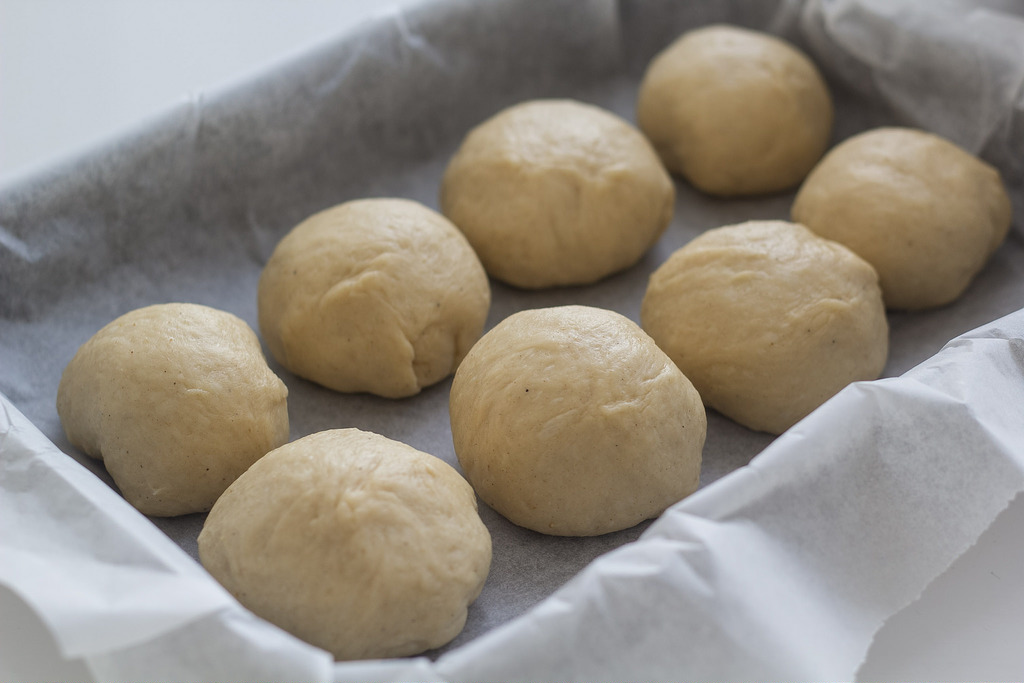
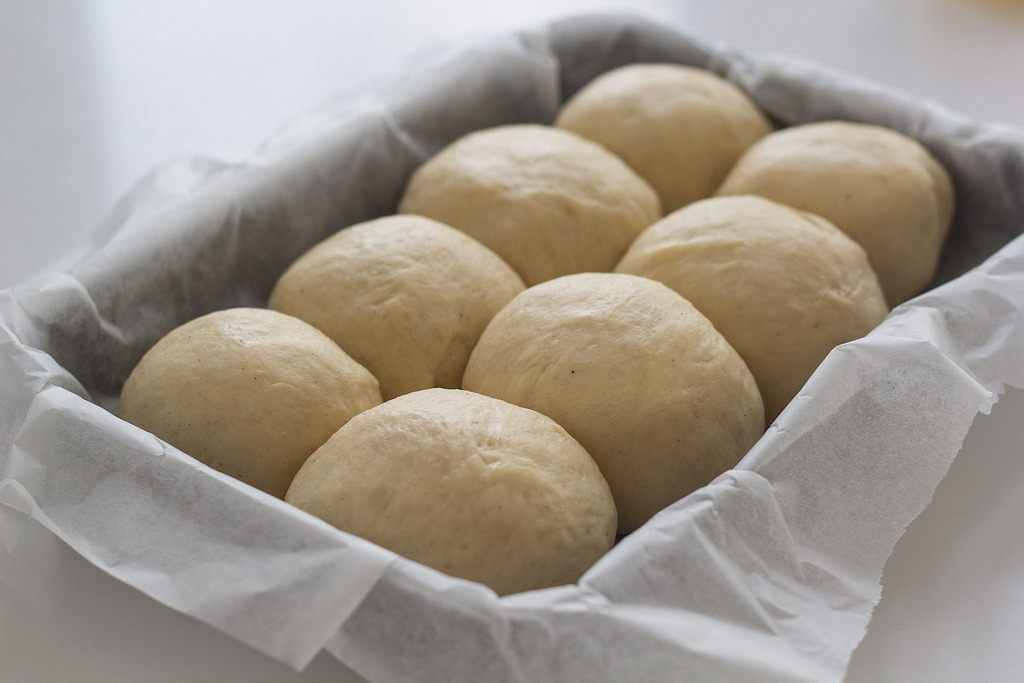
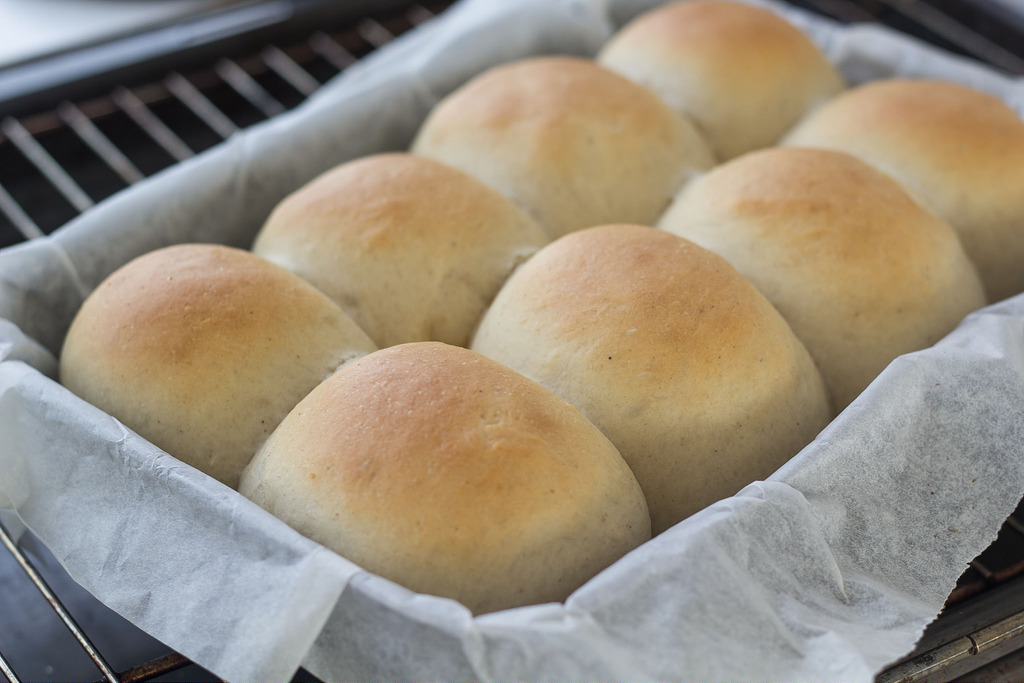
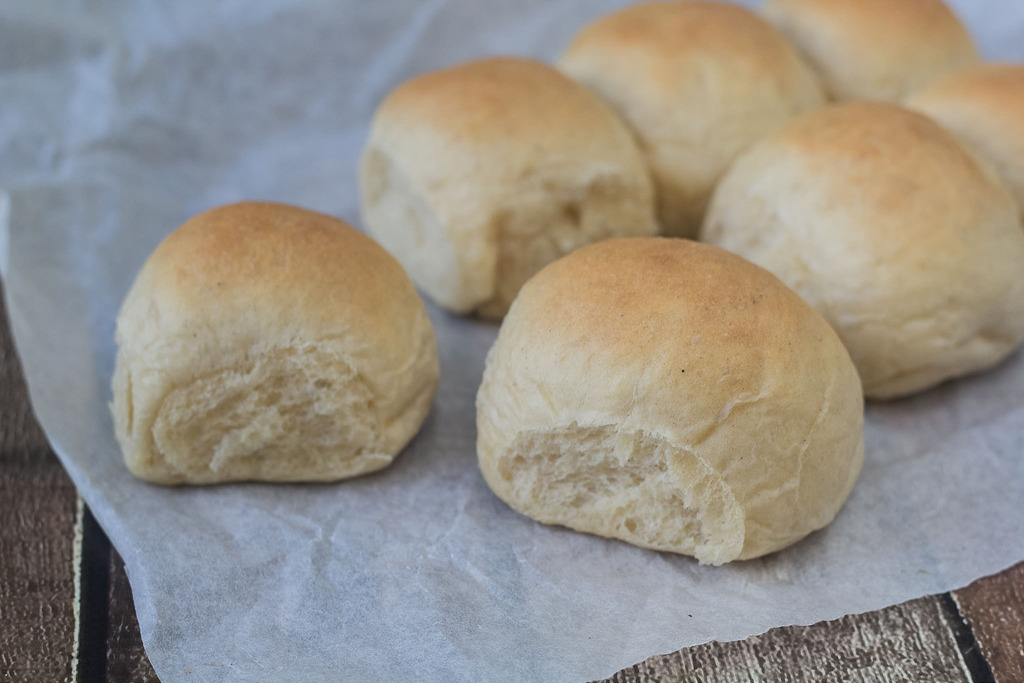
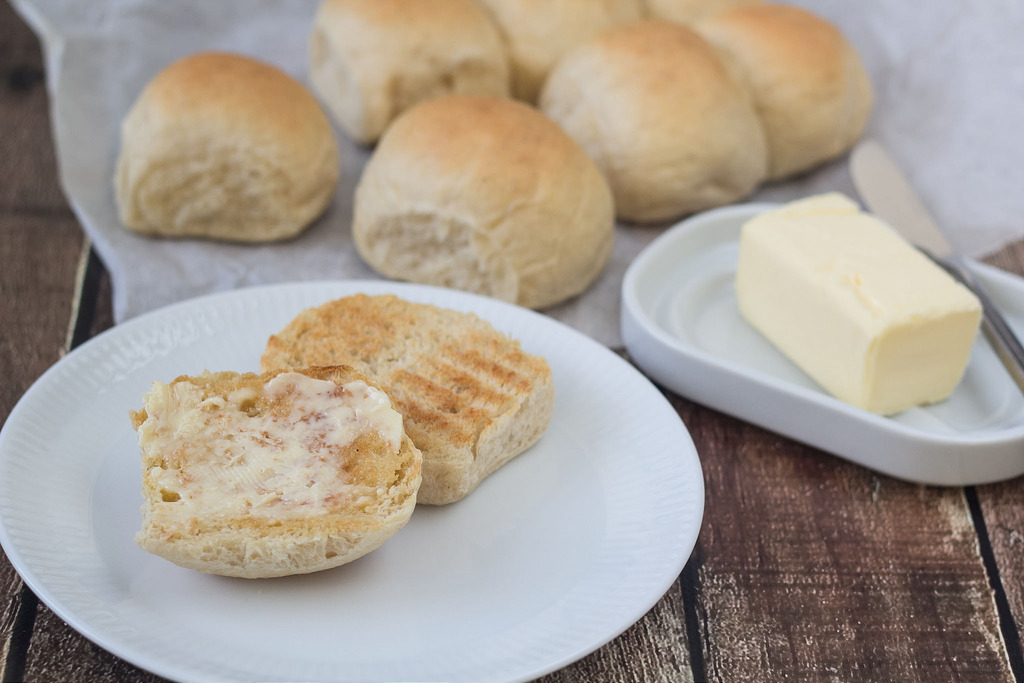
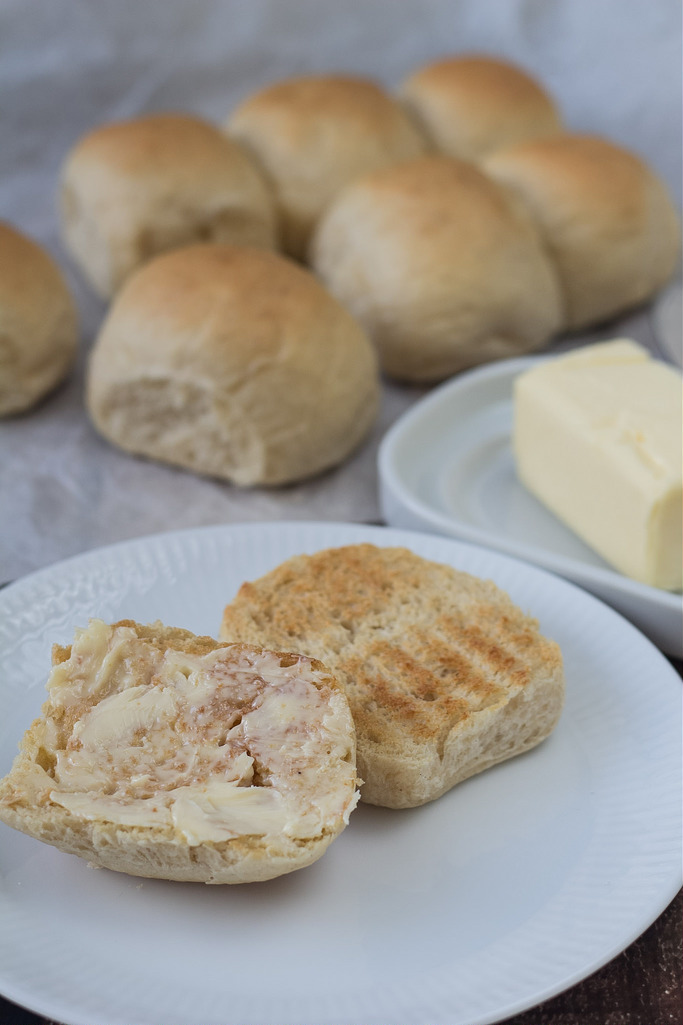
Cai J Nielsen
Rlsker at bage de ser dejlig ud
Louise Dam
Tak, de var også rigtig gode :-)
Greta
They are called wheat buns but have no wheat flour in them, just all-purpose white flour? Just making sure. Making today! Thanks! Greta
Kim Nielsen
In Denmark we use Hvedemel which is plain wheat flour (Which is the most common). However, as I understand it All-purpose flour is also the same as wheat flour. We don't have all-purpose flour in Denmark. Regards Kim (NordicFoodLiving.com)
Greta Blegvad
Tusind tak, Kim! I made them and they were delicious! I used 4 teaspoons of active dry yeast instead of the fresh yeast. This recipe is very similar to my husband's Mormor's. I really like the addition of cardamom.
Best,
Greta
P.S. - I am on day 2 of the sourdough starter to make your Rugbrød! Thanks for the great recipes!
Kim Nielsen
Hi Greta. You are welcome! I am just happy that you like my recipes here on NordicFoodLiving. Regards Kim :-)
wen
I am so happy you explains this. Does this mean all your recipes use *wheat flour* when it says *all purpose flour* ? Here in US all purpose flour is different than wheat flour. Thanks.
Kim Nielsen
In Denmark we normally use "wheat flour" for all kinds of cooking. Cakes, bread and so on. When I write "all-purpose flour" I mean "wheat flour". I did not know that it was not the same. Based on what I can find on the internet the two types are almost the same? Regards Kim (NordicFoodLiving.com)
Tina
Hvis man bruger tør gær hvor meget skal man bruge.
Tak
Kim Nielsen
If you are using dry yeast. Then you should use about 1 oz active dry yeast for this recipe. Add it together with the flour.
Louise
Do you add any water when using dry yeast?
Just tried this out and it looks nowhere near your pictures, wondering what I did wrong :-)
Kim Nielsen
It is sad that they didn't turn out perfect. I normally use fresh yeast. However, in the case that you need to use dry yeast. Then I will suggest following the recipe like it is but instead adding the dry yeast together with the flour. Also keep in mind that dry yeast normally requires extra kneading. If they turned out flat, then I guess that the problem could be solved with extra kneading and extra rising time. I hope that they will succeed the next time. Regards Kim (NordciFoodLiving.com)